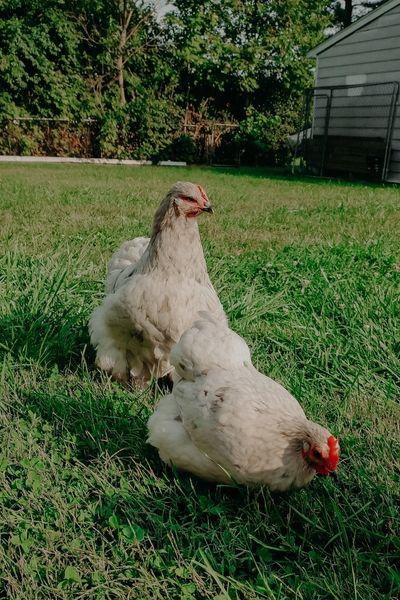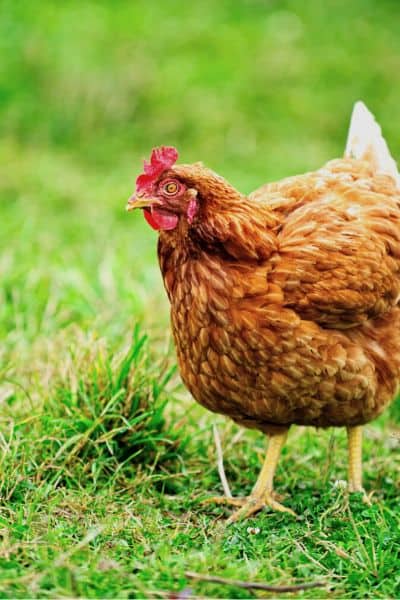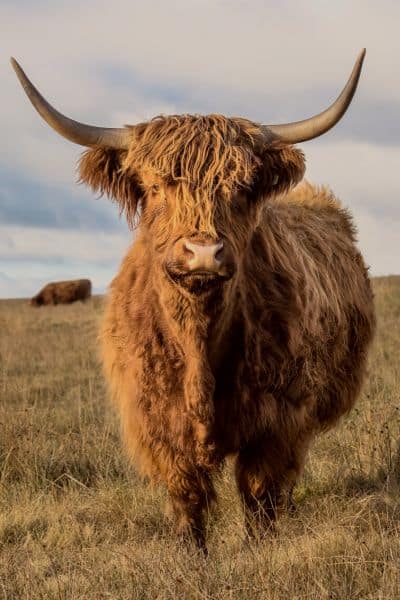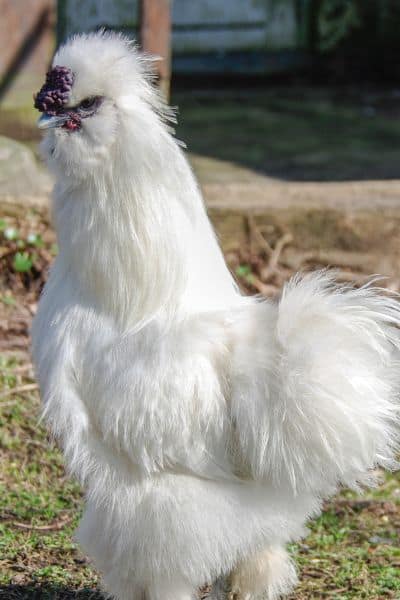The Ultimate Guide to Starting a Hobby Farm: From Dreams to Reality
Dreaming of starting a hobby farm but not sure where to begin? Whether it’s the appeal of fresh produce, the joy of raising animals, or the peace and slow living of country life that draws you in, starting a hobby farm can be a great way to fulfill that longing and desire.
But, it requires careful planning, dedication, and a clear understanding of your goals. In this guide, I’ll walk you through the important steps to start your hobby farm, from setting clear goals to selecting the right projects that align with your vision.
Let’s turn your hobby farm dreams into achievable action steps.
Key Points Summary:
- Setting Clear Goals for Your Hobby Farm
- Planning Your Day and Week for Hobby Farm Maintenance
- Choosing the Right Hobby Farm Projects, Animals, and Crops

What Hobby Farming Is and Is Not
Hobby farming is a term used to describe a type of farm that is a small-scale farm operation that is run for pleasure rather than profit. It involves growing crops, raising farm animals, or both, on a smaller scale than a commercial farm. Hobby farmers typically have other sources of income and do not rely on their farms for their livelihood.
What hobby farming is:
1. A way to connect with nature: Hobby farming allows individuals to reconnect with the land, get their hands dirty, and raise farm animals, providing a sense of fulfillment and satisfaction.
2. A source of fresh and healthy food: Hobby farmers can enjoy the fruits of their labor by growing their own fruits, vegetables, and herbs, or raising their own eggs, milk, and meat.
3. A way to learn new skills: Hobby farming can provide opportunities to learn about sustainable agriculture practices, animal husbandry, and gardening, as well as develop skills in problem-solving and creativity.

What hobby farming is not:
1. A get-rich-quick scheme: Hobby farming is about the love of the land, lifestyle, and animals, not about making a profit. While some hobby farmers may sell excess produce or products, it’s not typically a primary source of income.
2. Low maintenance: Hobby farming requires time, effort, and dedication. It may not be as intensive as a commercial farm, but it still requires regular maintenance and care to ensure the success of your projects.
Hit the play button to watch now
First Steps To Starting A Backyard Farm
The first steps are crucial when starting anything new. It’s all about careful planning, thorough research, and setting clear goals. Without these key elements, it’s easy to feel lost and unsure of where to go next.
Planning is essential to map out the direction of your project and to anticipate any potential roadblocks. Setting clear goals gives you something to work towards and helps measure your progress.
And then there’s decision-making. Making informed decisions during the initial stages of a new project can set the tone for your entire hobby farming journey. Whether it’s about partnerships, resources, or the project timeline, each decision can impact the success of your project.
So, take a deep breath and remember that the first steps are just the beginning. With careful planning, thorough research, and clear goals, you’re setting yourself up for a successful journey ahead.
Free Farm Goal Planner!!!
➡️Get my proven system for choosing your farm goals so you don’t get burnt out.
Setting Clear Goals for Your Hobby Farm
Understanding Your Why: This might seem like a waste of time but just like starting a farm business a hobby farm still needs clear goals. These goals will help you make decisions and choose the right projects to start when making your hobby farm plans.
Start by asking yourself why you want to start a hobby farm. Is it for self-sufficiency, education, or just for fun? Your overarching goal will guide every decision you make whether you have a small plot of land or multiple acres of land. From the land you use to the crops and animals you choose.
Understanding your ‘why’ will serve as the foundation for your hobby farm, guiding every decision from the size of your garden beds to the types of crops and animals you choose to raise.
It helps to jot down your thoughts, as this clarity of purpose will keep you motivated and focused, especially when faced with challenges causing you to wonder why you got started in the first place. Remember, the goal of a hobby farm goes beyond mere productivity; it’s about the joy and fulfillment that comes from nurturing life and being most self-sufficient.

Quick Overview Of Steps to Setting Your Goals:
- Vision Boarding: Create a vision board that represents your ideal hobby farm. Include images, quotes, and anything that inspires you.
- Research and Education: Learn about different aspects of hobby farming through books, online resources, and local farm visits.
- Setting Specific, Measurable Goals: Define what success looks like for your farm. Do you want to Start a garden and grow enough vegetables to feed your family? Raise chickens for eggs? Be as specific as possible.
- Creating a Timeline: Set realistic timelines for achieving your goals. Break down your goals into short-term and long-term, with actionable steps for each.
How To Start Vision Boarding
If you are not a visual person you may not care to do this. BUT I find this is helpful when I am struggling to feel like we will reach our goals. I can pull up the trello board I made on my phone and look at the dream goals I have set for myself.
Creating a vision board is a powerful tool to visualize the goals of your hobby farm. Get images from Pinterest or Unsplash and add them to your vision board along with anything else that resonates with your dream farm life.
Whether it’s a lush raised bed vegetable garden, happy free-range chickens, or a cozy farmhouse, putting your vision in a place where you can go back to it makes it more tangible. This process not only fuels you to keep going on the hard days but also serves as a constant reminder of what you’re working towards.
As you delve into the planning and hard work required to start a hobby farm, your vision board will be there to remind you of the bigger picture, keeping you inspired and aligned with your farming aspirations.
Tools You Can Use:
- Trello
- ClickUp
- Google Drive Folder
- Canva
Below is an example of what my vision board started out looking like. It can be really simple and you can attach screenshots of things you like to the cards and it creates a vision board on your phone.

But you can also add things like the cost of certain things so you have data to help you know what you are working towards. Anything you can do to keep making steps forward will help you move in the right direction.
Research and Education
Arming yourself with knowledge is key to successfully starting and managing a hobby farm. BUT before you do that I want you to make a list of the things you plan to raise or do on your hobby farm. Then under each project, I want you to make a list of the things you would need to learn to get started.
Dive into books, online forums, blogs, and online workshops focused on small-scale farming, sustainable agriculture, and animal care. Give yourself 3-5 resources to go through about that subject and THATS IT. It’s easy to get stuck in the research phase and never take action on your goals.
This step is about immersing yourself in the hobby farming world to understand what it takes to run a farm, from the daily chores to seasonal tasks.

Here are some ideas:
- Learn about the specific needs of different crops and livestock.
- Which breeds or species are best for your goals.
- Climate considerations.
- Sustainable farming practices.
Setting Specific, Measurable Goals
Now that you’re armed with inspiration and knowledge, it’s time to set specific, measurable goals for your hobby farm. What exactly do you want to achieve?
Maybe you want to grow enough vegetables to sustain your family throughout the year or to produce organic eggs for sale at the local market.
Whatever your objectives, be clear and realistic in setting them. Define what success looks like for you, including how much time you can dedicate to your farm, what resources you have available, and what you hope to accomplish within a certain timeframe.
Here is what a goal should look like. You can take this template goal for yourself and apply it to any goal you have for your homestead.

I want to raise _____ to supply my family with _____ amount of _______ to supply them with ____ for ___ amount of time.
I want to raise meat chickens to supply my family with 200 pounds of chicken to supply them with meat for 6 months.
Setting specific goals not only helps in planning and prioritizing your activities but also provides clear benchmarks for measuring your progress. Remember, the key to achieving your hobby farm dreams lies in setting goals that are ambitious yet achievable, pushing you to grow while ensuring you don’t take on more than you can manage so you don’t end up burning out.
Creating a Timeline
A well-defined timeline helps break down your farming dream into manageable milestones, ensuring that progress is steady and measurable.
Start by distinguishing between short-term and long-term goals.
- Short-term goals could include tasks like preparing your soil for planting, setting up chicken coops, raising meat chickens, or planting your first vegetable patch, which can be achieved within the coming weeks or months.
- Long-term goals might involve expanding your farm, achieving full self-sufficiency, or generating a certain income from farm produce sales, which could take a few years to accomplish.
For each goal, define actionable steps and assign a realistic deadline. For instance, if your goal is to start a vegetable garden, your steps might include researching suitable crops for your climate, purchasing seeds, preparing the land, and finally planting the seeds. Each step should have its own timeline, taking into account factors like seasonality and your schedule.

GET SUPER DETAILED with this. The more detailed of a plan you make the easier it will be to jump in on a task associated with that project when you have a few extra minutes. It also helps with desition fatigue and you are more likely to work on a project when you don’t have to decide what to do.
Regularly review and adjust your timelines as needed when unforeseen challenges pop up. Remember, the purpose of setting a timeline is not to add pressure but to provide a structured path toward achieving your farm goals.
Flexibility is key; it’s important to adapt your plans as you learn more about the rhythm of farm life and what works best for your specific situation.
Creating a detailed timeline for your hobby farm goals is a dynamic process that involves setting, reviewing, and adjusting your plans as you go. This approach ensures that you are always moving forward, making your dream of running a successful hobby farm increasingly attainable.
Want To Make Money From Your Backyard Farm?
Get the 9 Secrets To Making More Money From Your Backyard Farm FREE!

Planning Your Day and Week for Hobby Farm Maintenance
This is one area I think people forget to think about. It’s not just the time to start the project you have to consider. It’s the daily maintenance that takes time out of your day. Even if it’s only a 15-minute task that is 5 minutes to get prepared to do the task, 15 minutes to complete, and 5 more minutes to wind out of that task.
Here is an example if you have a vegetable garden. – 5 minutes to change clothes and appropriate footwear and get out to the garden. 15 minutes to water and check for weeds depending on the size. And 5 more minutes to head back inside change shoes and get on to the next thing. That’s a total of 25 minutes out of your evening for what seems like a small chore.
Time management is key for balancing a hobby farm with other life responsibilities can be challenging. Effective time management ensures you can enjoy farming without feeling overwhelmed.
Steps for Effective Planning:
- Audit Your Current Schedule: Track how you spend your time for a week to identify available slots and time wasters.
- Prioritize Tasks: Determine which farm tasks are daily, weekly, and seasonal. Prioritize them based on your goals.
- Use Tools and Technology: Utilize planners, apps, or digital tools like Google Sheets and Trello for scheduling and reminders.
- Be Realistic and Flexible: Allow for flexibility in your schedule for unexpected tasks or delays. Remember, hobby farming should be enjoyable, not another source of stress.
Hit the play button to watch now
How To Audit Your Current Schedule
The first step towards effective hobby farm management is understanding how you currently use your time. For one week you can keep a detailed log of your daily activities. Or sit down with a Google calendar and plan out exactly what you do every week. Work, church, kids school, dinner, feeding animals you already have, even laundry and other chores that have to be done.
It helps to be able to SEE where your time goes and it’s more realistic when you have it in front of you instead of in your head. You will miss details that way.
The goal is to identify patterns, pinpoint time wasters, and highlight periods of the day when you’re most productive. You might discover, for example, that you spend a significant amount of time on social media in the evenings or that mornings are your most efficient time for physical tasks. This insight allows you to carve out dedicated time slots for farm activities, ensuring they fit seamlessly into your existing routine rather than adding unnecessary stress.

Prioritize Tasks
After gaining a clear understanding of your available time, the next step is to prioritize your farm tasks. Begin by listing all the tasks required to maintain your hobby farm, including daily chores like feeding animals and watering plants, weekly tasks such as weeding and harvesting, and seasonal activities like planting and preparing for winter.
Once you have your list, prioritize these tasks based on your specific goals and the critical needs of your farm.
Daily and weekly tasks will naturally take precedence, but it’s also important to plan for seasonal activities well in advance. By prioritizing your tasks, you can make sure that essential jobs are completed on time, and you’re always working towards your larger farming goals.
Use Tools and Technology
In today’s digital age, numerous tools and technologies can help streamline the management of your hobby farm.
Planners and scheduling apps allow you to organize your tasks efficiently, set reminders, and track your progress.
For more complex farm management, consider using specialized digital tools like Google Sheets for budget tracking or Trello for project management. — These are my two go-tos.
These platforms can be particularly useful for planning planting schedules, tracking animal health records, or managing farm-related projects. By leveraging these tools, you can keep all your farm-related information in one place, easily accessible from your smartphone or computer, making it simpler to stay on top of your farm tasks even when you’re on the go.

Be Realistic and Flexible
This is probably the most crucial aspect of planning for your hobby farm, remain realistic and flexible. If you don’t your animals and mother nature will teach you how real fast.
While it’s important to have a structured plan and clear priorities, farming by its very nature can be unpredictable. Weather, plant diseases, animal health issues, and other unforeseen challenges may require you to adjust your plans on short notice.
By building flexibility into your schedule and adopting a realistic approach to what you can achieve, you can adapt to these challenges without undue stress.
Remember, the aim of hobby farming is to enjoy the process and the lifestyle it brings. Allowing yourself the flexibility to deal with unexpected issues will ensure that farming remains a source of joy rather than becoming a burden.

Choosing the Right Hobby Farm Projects, Animals, and Crops
Aligning Choices with Goals: The projects you choose should reflect your goals and the amount of time you can commit to each of them. It can be so tempting to want to jump into all the projects without really thinking them through further than can I afford them.
Selecting Projects:
- Start Small: Begin with a few easy-to-manage projects that require minimal investment. This could be a small vegetable garden or a few chickens for eggs.
- Research and Planning: Understand the needs of the animals and crops you’re interested in. Consider your climate, soil type, and available space.
- Sustainability and Self-Sufficiency: Opt for projects that complement each other. For example, chicken manure can fertilize your garden, which in turn can feed your family and the animals.
How To Align Your Choices with Goals
Your hobby farm should be a reflection of your personal goals, whether that’s sustainability, self-sufficiency, education, or simply the joy of connecting with nature. Before diving into any project, take a moment to revisit your goals.
Think about the amount of time you can realistically dedicate to your farm and the level of investment you’re willing to make. Your choices should not only align with your overarching vision for your farm but also fit into your current lifestyle and commitments.
This alignment ensures that your farm enhances your life, providing satisfaction and fulfillment rather than becoming an overwhelming burden.

Start Small
For those new to hobby farming, the key to success lies in starting small. Choose a few projects that require minimal investment and are easy to manage.
A small vegetable garden, for instance, can be a rewarding introduction to farming without overwhelming you.
Similarly, raising a few chickens for eggs can provide a gentle entry into animal husbandry. – (Notice I said a few. That means 10 or less. Not 40+ which seems to be popular.)
Starting small allows you to learn as you go, gaining valuable experience and confidence before expanding your operations. This approach not only minimizes risk but also helps you understand the joys and challenges of farming on a manageable scale.
Research and Planning
Thorough research and planning are crucial for the success of your hobby farm. Take the time to understand the specific needs of the animals and crops you’re interested in. But pay close attention to the breeds or specieas of the project you are researching and make sure it was intened to serve the purpose you are looking for.

It wouldn’t make much sense to raise Tans or Belgin Hairs if you are looking to raise meat rabbits. Sure you can eat any breed but some are not going to produce as well as other breeds could.
Some crops may thrive in your environment, while others might struggle.
While yes we are not trying to start a hobby farm for profit the saying “cute doesn’t pay the bills” still fits here. This depth of understanding will help you make informed decisions, ensuring your farming efforts are both enjoyable and productive.
Sustainability and Self-Sufficiency
Aim for projects that promote sustainability and contribute to your farm’s self-sufficiency. Integrating systems where the output of one project can support another can create a harmonious and efficient farm.
For instance, chicken manure is an excellent fertilizer for gardens, turning waste into a valuable resource. Similarly, growing feed crops for animals can reduce your reliance on external feed sources.
By choosing projects that complement each other, you can create a closed-loop system that minimizes waste and maximizes productivity, bringing you closer to a self-sustaining farm.

Other Tips For Helping You Start A Hobby Farm
These are a few other key areas that will help you succeed with your hobby farm so you don’t end up broke and burnt out.
Set Your Budget For Both Starting New Projects And Maintaining
Setting a budget for your project or goal is an important step in turning your plans into reality.
To start, list out all the specific expenses associated with your project, including one-time costs like equipment or initial setup fees, as well as recurring expenses like monthly fees or maintenance costs.
Once you have a comprehensive list, it’s time to estimate the total amount of money you are willing to allocate to this project.
Look at your personal budget and ask yourself how much per month can I give to farm projects.

If it is $50 a month then getting started raising chickens could look something like this.
Month 1
Starting amount = $50
- You purchase a heat lamp, heat bulbs, and pin bedding. Total = $30
Month 2
Starting amount = $70 ($20 rolled over from the last month)
- You purchase a plastic tub, feeder and waterer, chick starter, and chick grit. = $65
Month 3
Starting amount = $55
- You are willing to start with 6 chicks from your local farm supply store. 6 chicks at $6 each = $36
Leaving you with $19 left over to start saving for the next project.
Do you see how this works? Once you can create a detailed budget that will guide your financial decisions as you work towards your goal decision-making becomes really easy.
Don’t Pressure Yourself To Be Profitable
Running a small farm can be a rewarding and potentially profitable venture if approached with careful consideration of various factors. I had a profitable rabbitry that started in my parents back yard. If you choose wisely you can have a successful farm business on any size piece of land.
But remember this is not the purpose of a hobby farm. You are working to enjoy the lifestyle. Having a farming business is a lot of work and extra brain power. You have to be motivated, self-driven, and ready to learn a lot.
Unless you are just looking to sell a little bit of your extra produce selling farm fresh produce is not as simple as putting up a flyer or going to a farmers market.
Free Farm Goal Planner!!!
➡️Get my proven system for choosing your farm goals so you don’t get burnt out.
Don’t Take On Debt
Let’s have a quick chat about the importance of avoiding farm debt. We all know that managing farm expenses can be challenging, but going into debt is a risky move that can have serious consequences for your lifestyle AND peace of mind.
By growing your farm slowly and organically, you can avoid the financial burden of debt and ensure a more sustainable future.
Taking on debt for a hobby farm might seem like a tempting shortcut, but it comes with significant risks. High-interest rates and the pressure of repayments can quickly turn your passion project into a financial nightmare. And that is no way to live.
Instead, focus on effective budgeting and cutting unnecessary costs. Get scrappy with building projects and be ok with ugly for a little while.

Take Your Time Building Your Hobby Farm Lifestyle
It’s so important to take the time to really embrace the rhythms of the farm and the seasons. Farming is a commitment, and it takes time to adjust to this new relationship with work.
When you start too many different farming projects all at once you will feel pulled in so many different directions you won’t know which way is up.
Creating a slow, well-organized plan, and starting intentionally will not only help you stay organized and on track, but it will also set you up for success in the long run.
Remember, it’s all about the commitment to embracing this new lifestyle. Take the time to adjust and focus on the transition, and you’ll find that the experience is much smoother. I’m cheering you on as you take the first steps on this incredible journey.
Don’t Compare Your Hobby Farm To Others
Whether it is from people you know locally or people on social media you are going to have to be careful looking at other people’s backyard farms as benchmarks you have to reach and instead as ideas.
It’s one of the fastest ways to get burnt out and feel like you are never at your dream lifestyle. If you find yourself comparing too much then step away from that trigger for a while.

Starting a hobby farm is an adventure that brings you closer to nature, provides fresh produce, and perhaps even becomes a source of income.
By setting clear goals, effectively planning your time, and choosing the right projects, you can create a hobby farm that is both rewarding and sustainable. Remember, the key to a successful hobby farm is patience, learning from experiences, and adapting your strategies as you grow.





